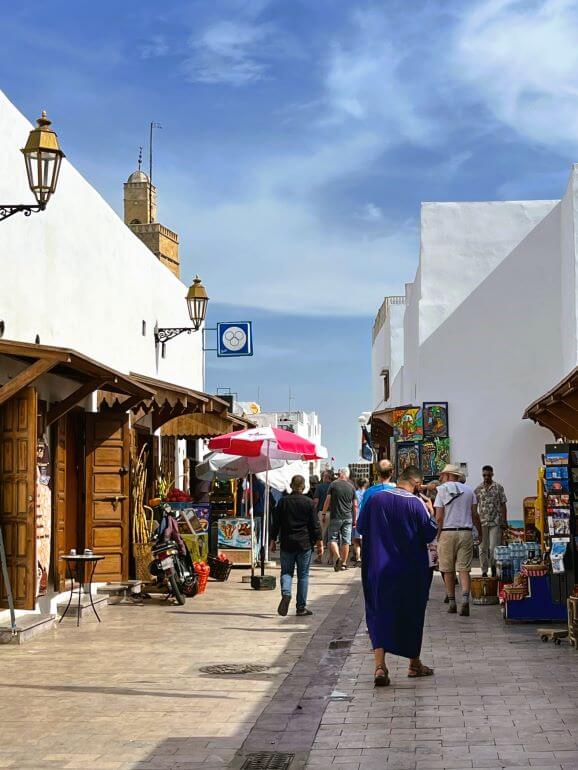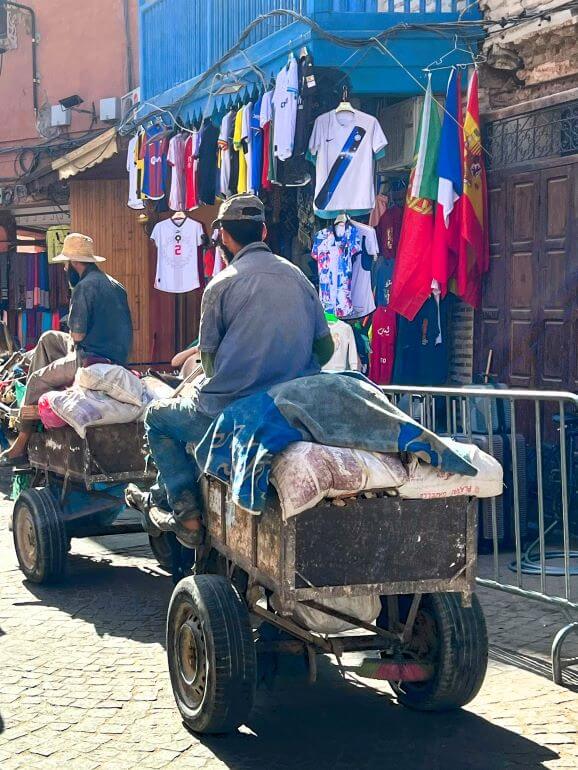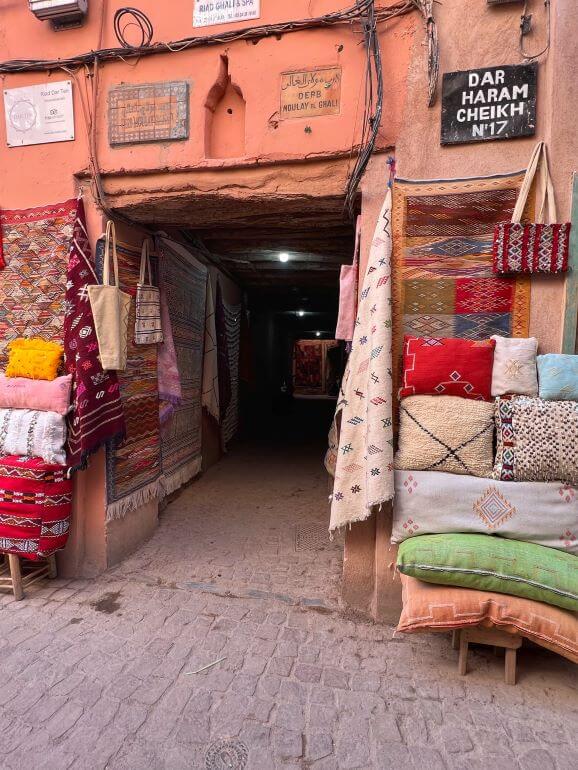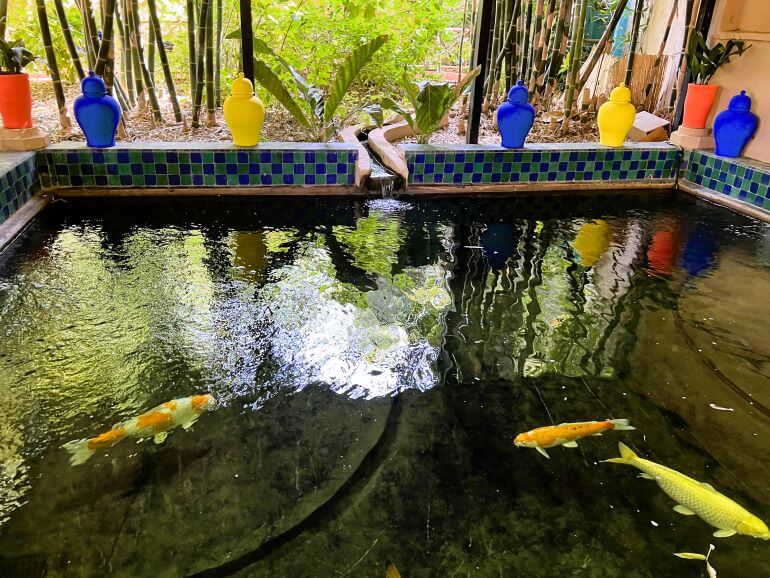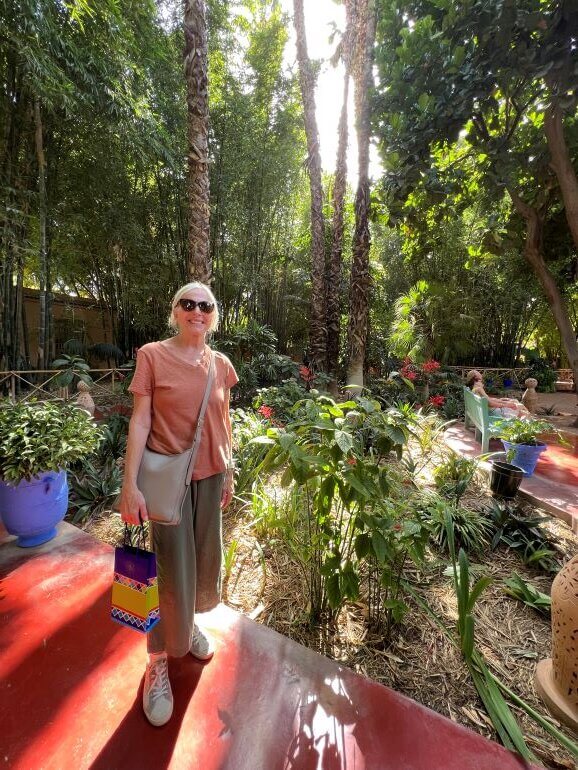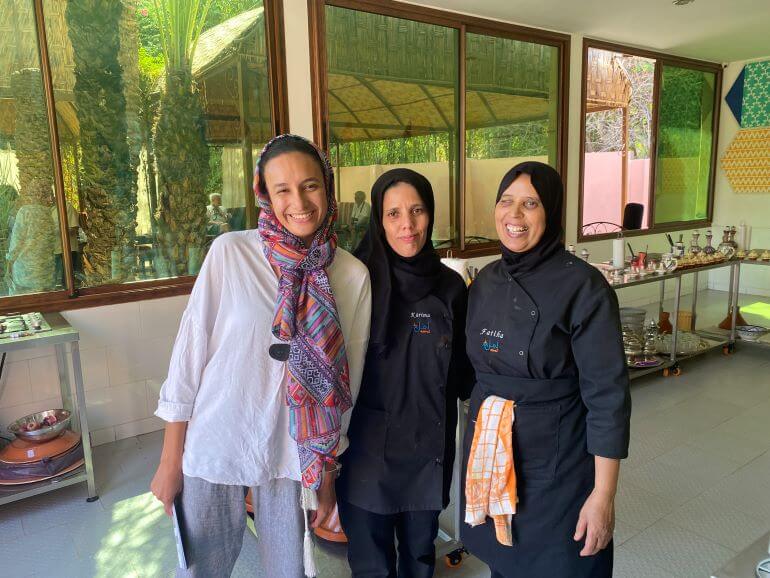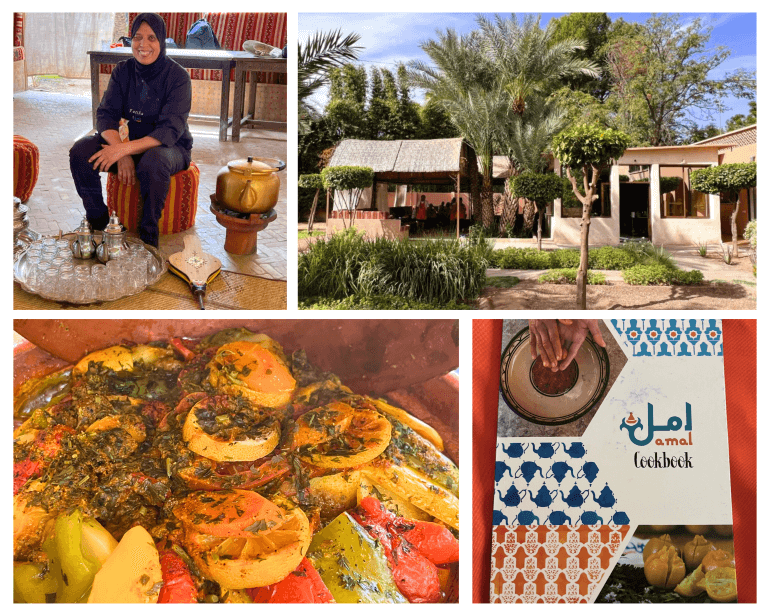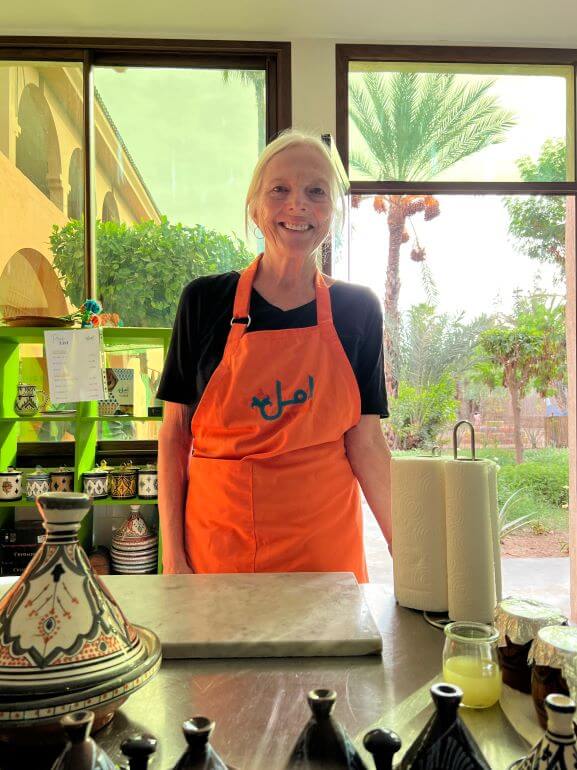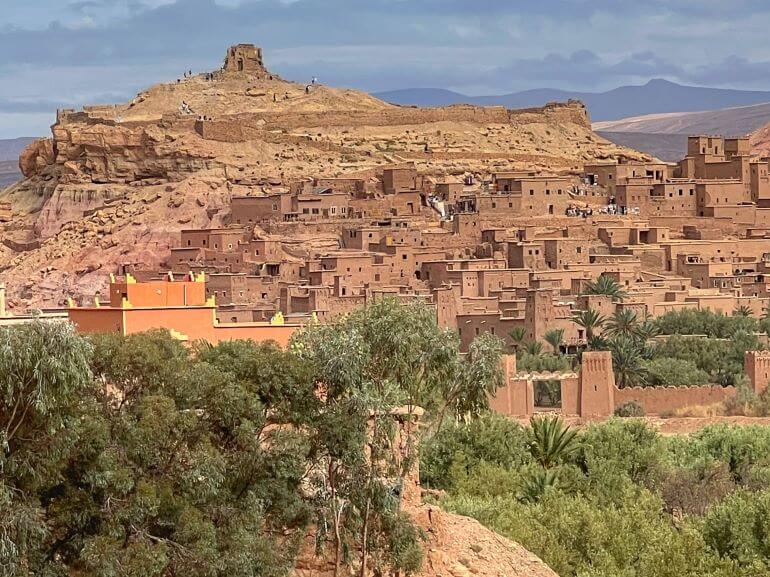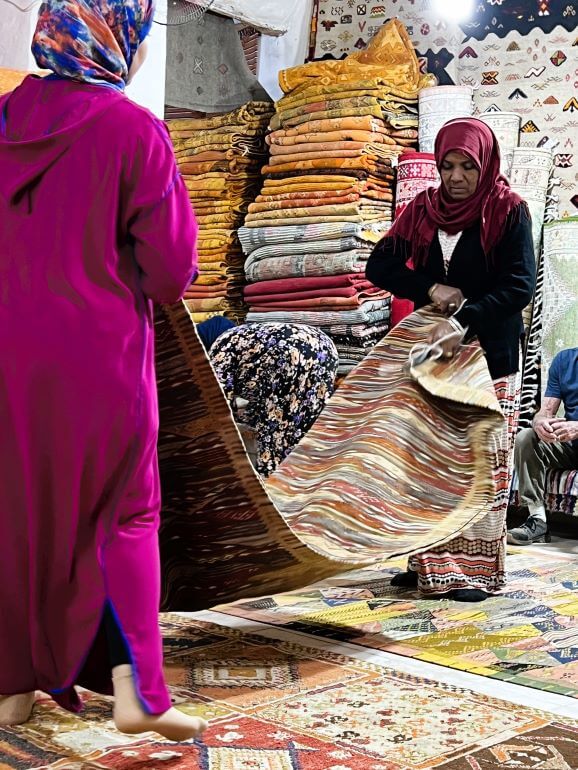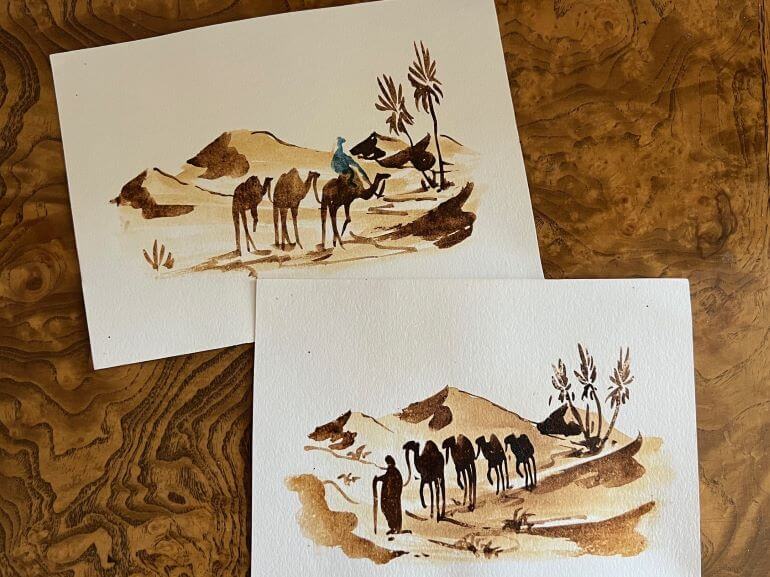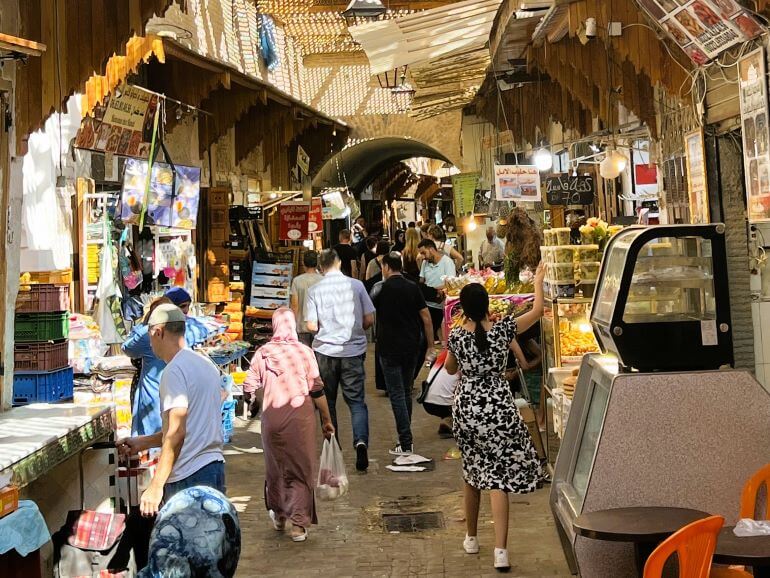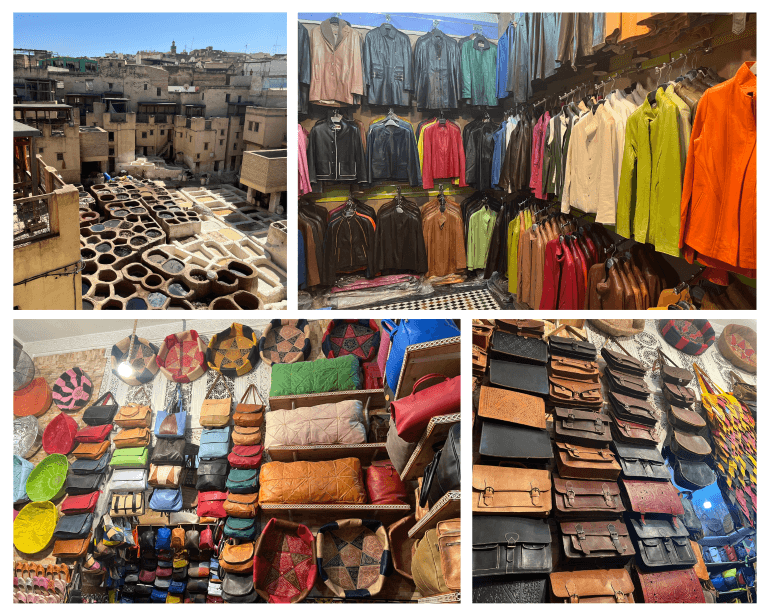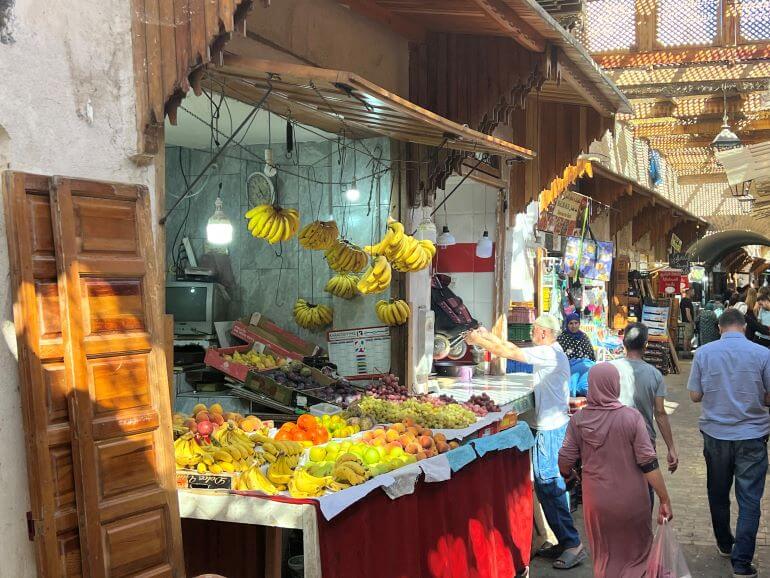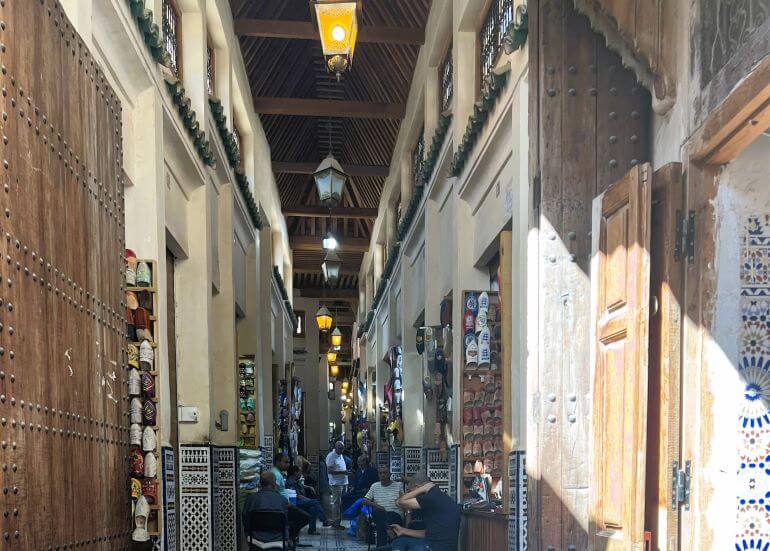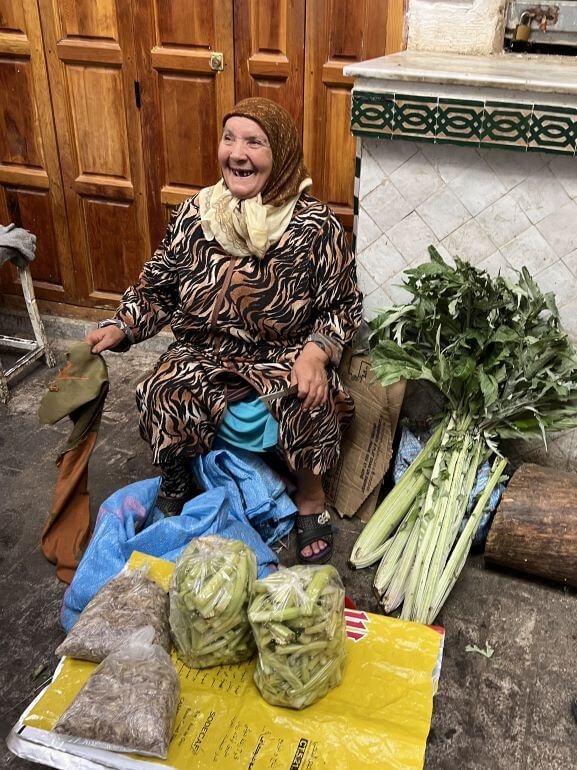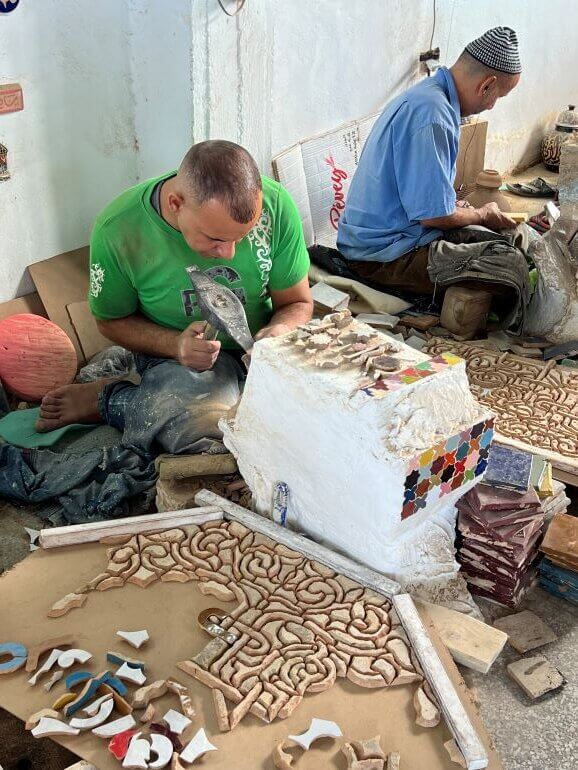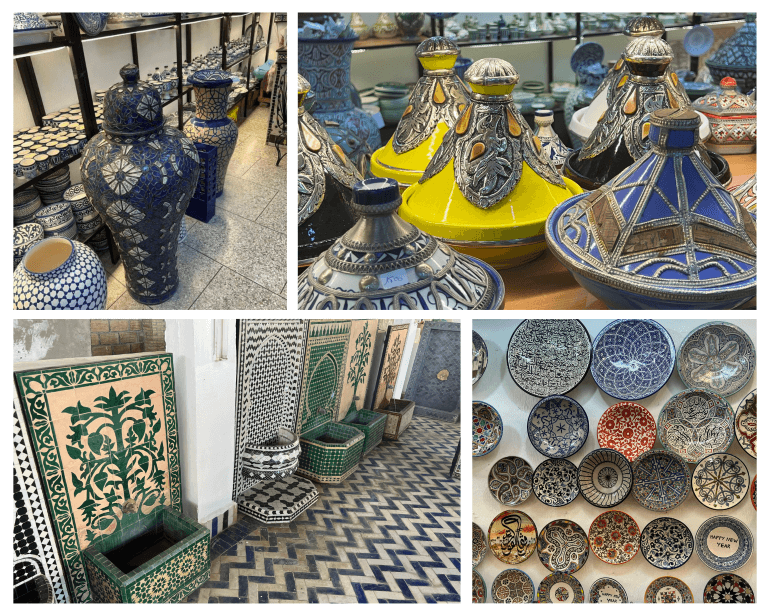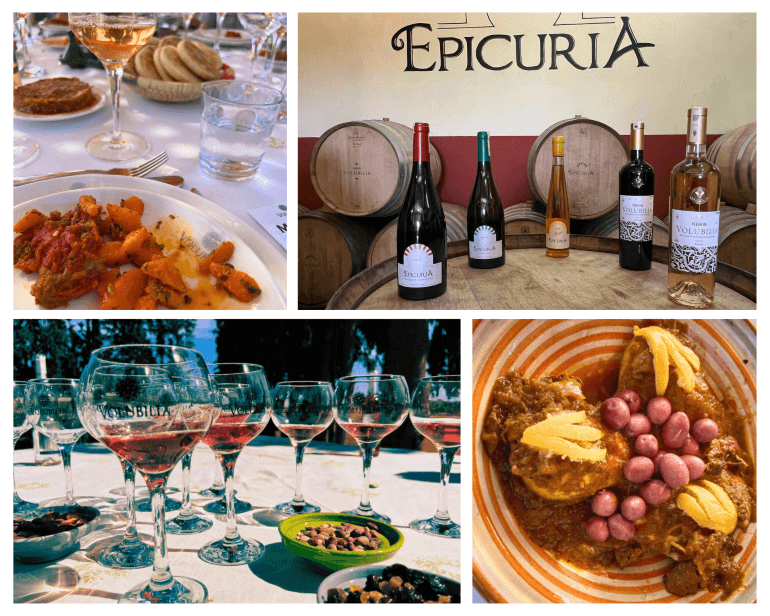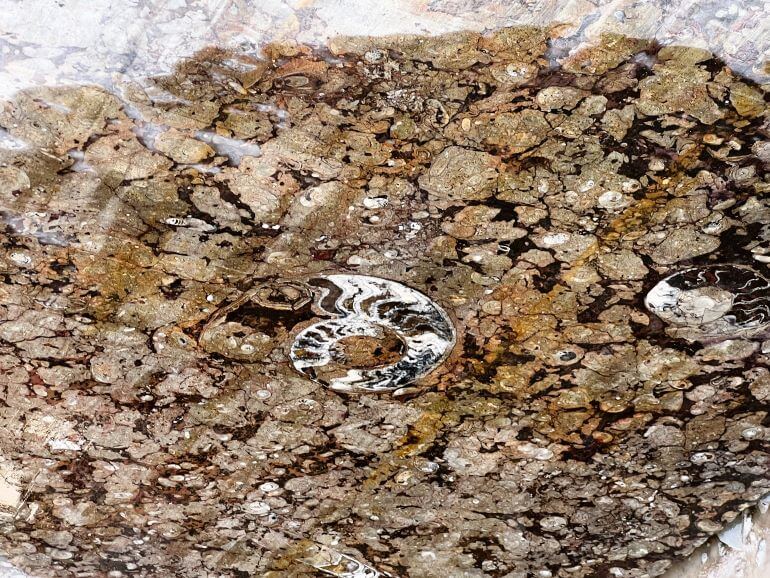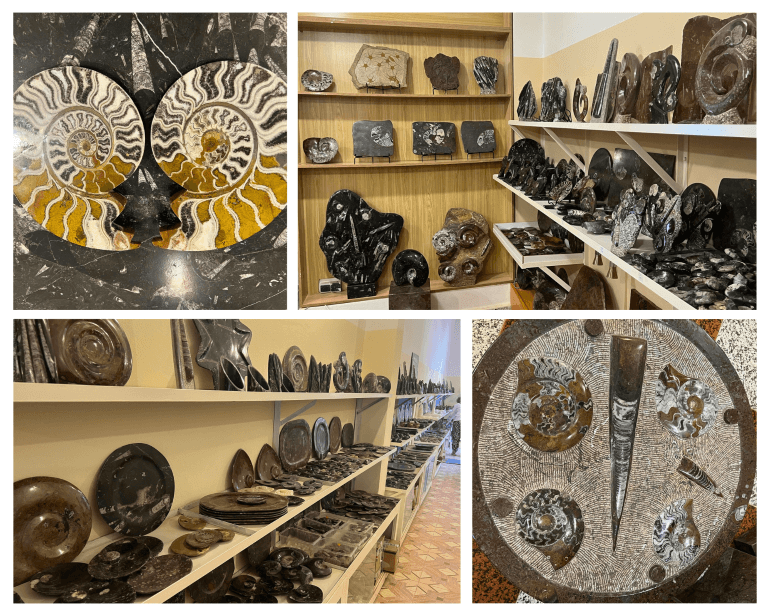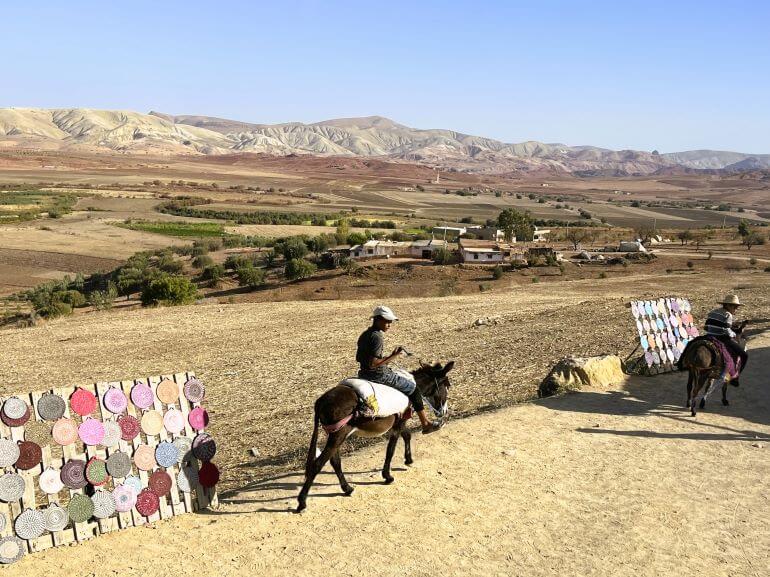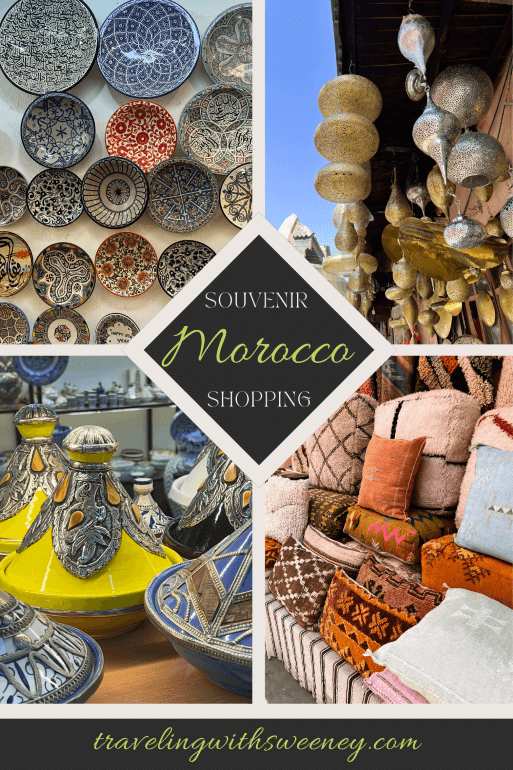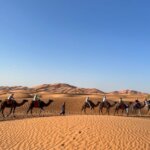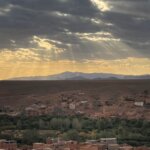Buying souvenirs in Morocco — art, textiles, clothing, ceramics, and more
What type of shopper are you when you’re traveling? Do you bring along extra luggage to accommodate your purchases? Do you ship souvenirs back home? Do you pick up a few small items that can be easily packed in carry-on and checked luggage? We tend to keep it simple. We make sure to bring items home that will be lasting memories of our trip. But since we pack lightly, we opt for things that are small, light, and (most often) unbreakable for putting in our duffels.
On a trip to Morocco, you’ll have many opportunities to be shopping for souvenirs — traditional items, crafts, food and wine, clothing, textiles, and more.
A big benefit of having the advice of a Moroccan tour manager and local guides, as we did on our Collette Colors of Morocco tour is knowing that you are dealing with reputable sellers and can be assured of good customer service (especially if you’ll be shipping items home). Although I’m showing the places where we found various items on our trip, most of these Moroccan specialty souvenirs can be found throughout the country. Here are some ideas of what to look for when you visit.
Marrakech
Marrakech medina
“Marrakech, the most well-known city for tourists, is a mix of magical, international flare, and old Morocco. In the medina, the narrow lanes are lined with vendors of all kinds, and donkey carts and motorbikes navigate around pedestrians and obstacles.” — TWS Broadening our Horizons in Morocco
In Jemma El Fna, Marrakech’s main square, and the souks that run deeper into the medina from there, you’ll find thousands of stalls and shops. Sellers will be ready to bargain with you on a wide range of goods, particularly ceramics, kaftans, scarves, household decorations, beauty products, tajines (earthenware pots), herbs and spices (key elements in Moroccan cooking).
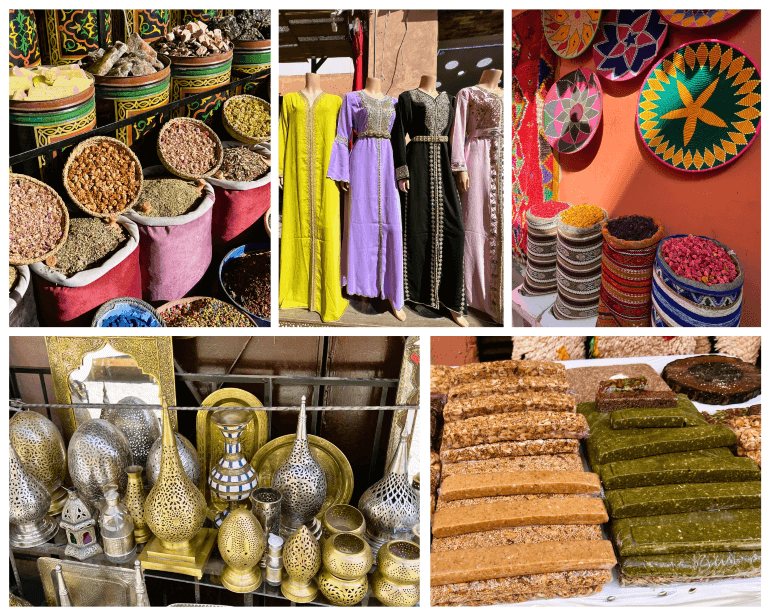
Marrakech medina — (Clockwise from top left) herbs and spices, kaftans, woven mats, sweets, and metal lanterns and decorations
Jardin Majorelle
Also in Marrakech are the beautiful gardens and fountains of Jardin Majorelle and the Berber Museum on the grounds. The boutique here has locally designed and produced Moroccan items including fashion accessories, scarves, handbags, and art, many reflecting characteristics of Berber and Islamic culture.
I bought a lovely illustrated book at the boutique, “The Street Trades of Marrakech”, an easy read and perfect souvenir for learning about the history of the various tradespeople of Marrakech who still practice their trades here.
Some of our fellow tour guests opted to visit the Musée Yves Saint Laurent, dedicated to the famous fashion designer who was greatly inspired by the colors and textures of Morocco, next to the gardens on Rue Yves Saint Laurent. There you might find some great books for souvenirs and gifts at the YSL Bookshop.
Amal Women’s Training Center
“There is much to learn about Moroccan cooking and we got a chance to be hands on in the kitchen of the Amal Women’s Training Center. During a cooking class at the organization’s location in Marrakech, we also learned about the mission of this wonderful women’s training organization and enjoyed the dishes we prepared for lunch. The organization helps to empower women providing training and other assistance to these women in need.” — TWS Broadening Our Horizons in Morocco
Founded in 2012, the Amal Women’s Training Center has over 30 employees and over 300 women in need (often widows, divorced mothers, or women with little to no education, for example) have graduated from the their culinary programs. From there, they’ve gone on to live independently and find good jobs.
Chef Fatiha (shown in the photo below) heads up the cooking classes for visitors. She came to Amal from difficult situations and found purpose and a way to a better life for herself.
The cooking classes are a big source of fundraising for the center, but they also have some items for purchase that make wonderful souvenirs and help to support the cause. I purchased an apron like the ones we wore in the cooking class (shown in photo below) and a cookbook with recipes contributed by the women of Amal.
Ksar of Ait Ben-Haddou
“On the “Road of a Thousand Kasbahs”, the ancient trading route between the Sahara and Marrakech, is Ksar Ait Ben-Haddou. The old ksar (village) is a stunning fortress established in the eighth century of defensive walls, towers, and residential buildings — some that were homes of wealthy traders. — TWS Broadening Our Horizons in Morocco
After a walking tour of the old fortress town, we crossed the river bed to the new area of the town where there are several shops. We had a nice presentation and demonstration of rug-making by the talented craftswomen at a women’s cooperative. We watched them weaving on the their looms, and admired the large inventory of beautiful hand-made rugs and carpets of all sizes.
Most of the rugs are made with sheep’s wool, but goat or camel hair is also used for weaving throughout Morocco. Mr. TWS and I weren’t looking to buy, but at least one of our fellow guests bought a rug to be shipped back to his home. As with all the other goods we saw, the prices seemed quite good for the quality.
At a small shop nearby the cooperative, an artist was painting Moroccan scenes on small pieces of paper using only natural pigments, primarily saffron and indigo. After painting, he heats the paper with a flame which brings out the color. This type of “fire painting” is very common for Berber artists in Morocco, I’m told. I bought two of these special paintings.
Fes
Fes medina
The 9th-century medina of Fes is a shopper’s paradise. It’s a very busy (and somewhat chaotic place), so you probably won’t see everything as you move along with the crowd through some of the 9,000 alleyways.
“As the oldest city in Morocco, Fes has a very mysterious feel particularly in the medina with its thousands of maze-like alleys, souks (markets), and passageways. The diverse aromas and colors of the spices, crafts, meat (of many kinds including camel), jewelry, textiles, clothing, and more were tantalizing and quite different than any we’ve experienced in our previous travels. It would be easy to get totally lost here without a guide.
“Hidden along dark passages of the medina was the entrance to a leather tannery where we looked down upon the huge vats of dye and perused the shops with many finished products such as jackets and bags.” — TWS Broadening Our Horizons in Morocco
Some of our tour group bought leather jackets, bags, and even an ottoman, all remarking about how affordable they were.
As we made our way through the busy passageways, we made to sure to keep looking to our right and left for other souks and obscure alleys. There are many stalls with fresh fruit, vegetables, meat (including goat and camel), spices, bread, and sweets.
Photography tip: Be respectful of the vendors and others in the markets and don’t take photos of someone without their permission. Many, not all, will be happy to oblige. Our local guide knew the lady below and she was very nice to let us take her photo.
Art Naji
Of the many artisan products of Morocco, among the best known are Moroccan ceramics and mosaics. We were guided through a factory (Art Naji located near the Fes medina) where we observed all stages of the production, steps which have remained basically the same over the centuries. It was quite fascinating to see the various artists at work.
The gift shop at the factory has a wide array of beautiful items, large and small, to purchase including fountains, tajines, tables, bowls, and vases.
Meknes
Domaine de la Zouina
“Are you surprised that there are wineries in Morocco since it is a predominately Muslim country? We were! A visit, tour, and lunch at a winery in Meknes was a lovely way to spend one of our afternoons. The weather was perfect for enjoying the beautiful outdoor setting. A special varietal we enjoyed along with very good red wines was their vin gris (grey wine). It is a light style of rosé that is made with red grapes, but in a style more common with white wine production.” — TWS Broadening Our Horizons in Morocco
Domaine de la Zouina, a winery founded by French colonists in the early 20th century, is located about 20 minutes from the UNESCO city of Meknes at the foot of the Middle Atlas Mountains. The Mediterranean climate is perfect for the vineyards and olive groves on the estate. We bought two bottles of wine, Epicuria Cabernet Sauvignon, to enjoy while at our luxury camp in the Sahara Desert. Other guests bought wine for the camp and other guests bought a bottle or two to take home. Some of their wines can be found here at shops in the United States. We also brought home a bottle of their olive oil as a gift for friends
Erfoud
For our two-night stay in the Sahara Desert, we were driven in 4x4s from the oasis town of Erfoud where we had a tour of a fossil factory. Slabs of limestone with the embedded fossils are mined in the desert, and then at the shop they are cut into the objects and polished. It was interesting to watch them at work, and the items they produced were beautiful and unique. We visited their shop which had many beautiful items crafted from the limestone slabs with embedded fossils into jewel boxes, tables, plaques, dishes and many other items. I purchased a small round jewel box.
General shopping tip: Beyond the cities, historic sites, and medinas, there are a lot of opportunities to buy local crafts along the roadsides by individual sellers who you may like to support with a purchase. However, talk to your guide about which places and sellers are best for authenticity, quality, and value.
Cash tip: Make sure you’ve got some cash (specifically Moroccan dirhams) at ATMs for making purchases at small shops or from individual vendors.
Bargaining tip: I’ve never been big on haggling, but it’s actually expected at shops in the medinas. On the Collette blog there is a post with some quick tips about haggling in Morocco. Your tour manager and local guide will have more advice and will be able to direct you to the best sellers.
What souvenirs of Morocoo would you like to take home?

